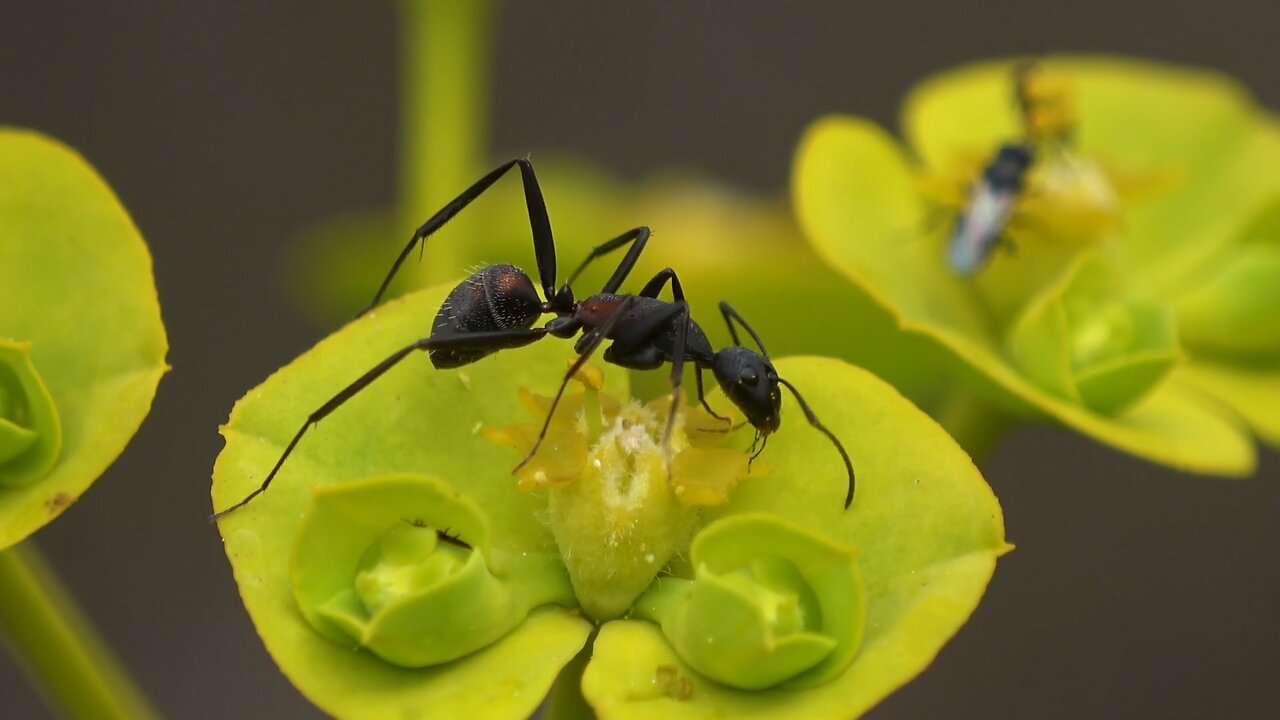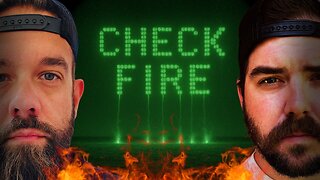Premium Only Content

"The Ant World: Uncovering the Life of Social Insects"
Ants are social insects that belong to the family Formicidae, and they are found almost everywhere on Earth. Known for their complex societies, ants exhibit remarkable teamwork and organization, making them one of the most successful groups of insects.
### Key Features:
- **Body Structure:** Ants have a segmented body divided into three parts: the head, thorax, and abdomen. They have six legs, antennae, and powerful mandibles that they use for carrying food, digging, and defense.
- **Size and Color:** Ants vary in size depending on the species, ranging from less than a millimeter to several centimeters in length. They can be black, brown, red, or yellow.
### Social Structure:
Ants live in colonies that can range from a few dozen to millions of individuals. The colony is divided into different castes, each with specific roles:
- **Queen:** The queen is the reproductive female in the colony. Her primary role is to lay eggs. Some species have multiple queens.
- **Workers:** The worker ants are sterile females that maintain the nest, care for the queen's offspring, forage for food, and protect the colony.
- **Soldiers:** In some species, larger ants called soldiers protect the colony from predators and help with larger tasks like cutting leaves or carrying heavy loads.
- **Drones:** Drones are male ants whose sole purpose is to mate with the queen. After mating, drones typically die.
### Behavior:
- **Foraging:** Ants are known for their foraging behavior, where they search for food and bring it back to the colony. They communicate the location of food to other ants using pheromones, leaving a chemical trail for others to follow.
- **Nesting:** Ants build nests in various places, such as underground, in wood, or in leaf litter. Some species, like leafcutter ants, create intricate nests with multiple chambers.
- **Communication:** Ants communicate through chemicals called pheromones, which they use to signal danger, mark trails, or coordinate activities within the colony.
### Diet:
Ants are omnivores, feeding on a wide variety of food sources. Their diet can include:
- **Sugary substances:** Such as nectar, honeydew (produced by aphids), and fruits.
- **Proteins:** From other insects, dead animals, or seeds.
- **Fungi:** Some ants, like leafcutter ants, cultivate fungi as their primary food source.
### Ecological Role:
- **Decomposers:** Ants play a crucial role in ecosystems as decomposers, breaking down organic material and returning nutrients to the soil.
- **Predators and Prey:** Ants are both predators and prey, controlling insect populations and serving as a food source for many animals.
- **Seed Dispersers:** Some ants help with seed dispersal, aiding in plant reproduction by carrying seeds to new locations.
### Human Interaction:
- **Agriculture:** Ants can be beneficial by controlling pest populations, but some species, like fire ants, are considered pests themselves due to their painful stings and aggressive behavior.
- **Research:** Ants are studied extensively in various fields of science, including biology, ecology, and robotics, due to their complex social behaviors and efficient problem-solving abilities.
Ants are remarkable insects with intricate social systems and important ecological roles. Their ability to work together and adapt to various environments makes them a fascinating subject of study.
-
 16:58
16:58
Actual Justice Warrior
2 days agoBLM's Original HOAXER Killed By Black Crime
25.2K35 -
 LIVE
LIVE
RealAmericasVoice
3 days agoHOME OF REAL NEWS
5,469 watching -
 2:04:21
2:04:21
Badlands Media
16 hours agoDevolution Power Hour Ep. 388: Assassination, Inflection Points, and the Battle Ahead
330K100 -
 2:08:03
2:08:03
Inverted World Live
8 hours agoCharlie Kirk Assassinated | Ep. 106
102K56 -
 3:01:07
3:01:07
TimcastIRL
10 hours agoCharlie Kirk Assassinated, Suspect In Custody | Timcast IRL
636K1.02K -
 5:44:49
5:44:49
Redacted News
12 hours agoTurning the Tide: 9/11 Justice in 2025 — Day 1 with Sen. Ron Johnson, Richard Gage and More
183K80 -
 2:48:00
2:48:00
TheSaltyCracker
10 hours agoYou're Being Hunted ReeEEStream 9-10-25
302K626 -
 13:09:56
13:09:56
LFA TV
23 hours agoBREAKING: CHARLIE KIRK ASSASSINATED - WEDNESDAY 9/10/25
386K128 -
 1:31:08
1:31:08
I_Came_With_Fire_Podcast
10 hours agoCheck Fire: God Bless Charlie Kirk
100K27 -
 1:13:35
1:13:35
Glenn Greenwald
12 hours agoCharlie Kirk Assassinated; NATO Alleges Russian Drones Flew Over Poland, and More | SYSTEM UPDATE #512
299K315